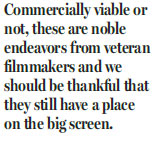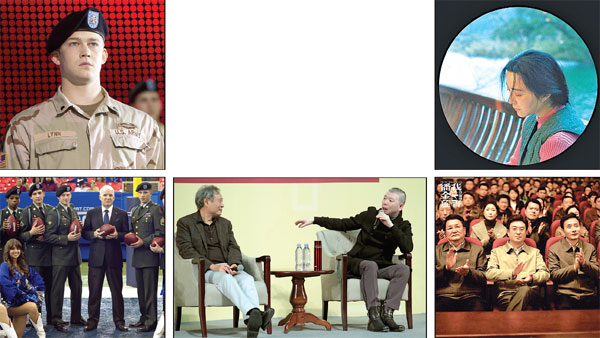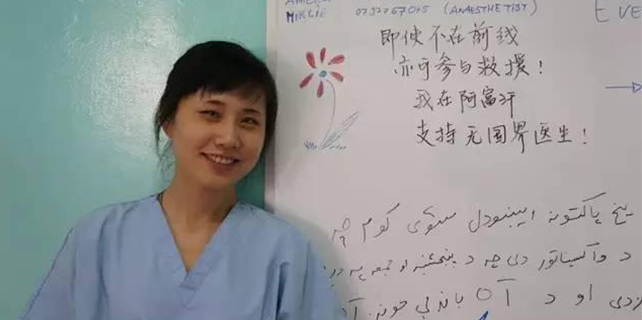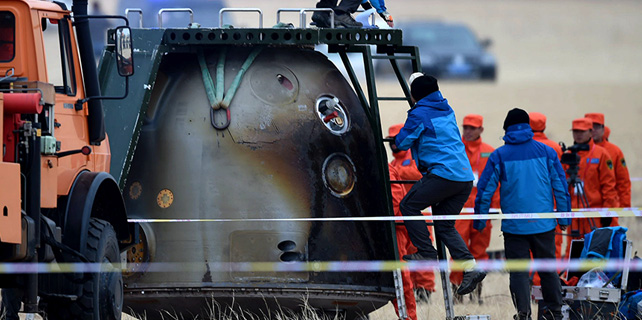More in common than meets the eye
A pair of films by two acclaimed directors recently hit Chinese screens, and though they are very different they share a lot of similarities, says Raymond Zhou.
The pairing of Ang Lee and Feng Xiaogang did not start this season when Billy Lynn's Long Halftime Walk and I Am Not Madame Bovary premiered in China one week apart and both directors shared a promotional event at Tsinghua University.
Four years ago, Feng's Back to 1942 followed Lee, in that case Life of Pi, also by only one week, which resulted in a wave of unplanned comparisons of the two movies and the brains behind them - comparisons that were not favorable for Feng.
As far as I am concerned, it all started in the summer of 2006 at the Shanghai International Film Festival where I was moderating a forum and both Lee and Feng were the toasted guests.
Lee had just come off the Oscar glory of Brokeback Mountain and was going to make Lust, Caution in Shanghai and Feng was graduating from his first epic The Banquet and launching into battle mode with Assembly.

At the podium Lee was a paragon of humility and Feng was anything but.
It is hard to find two film directors more different in temperament and artistic vision. But strangely they may have more in common than first meets the eye, when it comes to their latest films.
Both their releases are very personal stories with limited mass appeal even though they are adapted from critically acclaimed novels.
And they have both used technologies that are daring even for accomplished old hands.
What really strikes me as audacious is the level of immersion they manipulate with these technologies.
In Lynn, the format of 3-D, 4-K and 120 frames per second puts the audience in the center of everything, so close that many complained of being uncomfortable with the lack of reasonable distance.
It reminds me of immersive theater where an audience member may stand next to an actor and almost touch him.
Yet, the movie is very inward-looking, a rumination on the protagonist's world-view with very little outward action.
It is almost like Saving Private Ryan but with the opening and closing battle scenes deleted, leaving only the debate on the values of one life vs eight lives.
It may be counter-intuitive to use the technology of immersion for such a cerebral subject, in this case much more complicated than in the Spielberg movie, but that is where Lee's ingenuity - or folly, depending on how you view the end result - lies.
He seems to have transported viewers to a talkfest. And that, I believe, is also the root of its commercial failure.
Lynn would have worked perfectly as a play.
For Bovary, Feng designed a circular frame and complemented it with square and rectangular ones. This instantly creates a distance between the story and the audience, in that the audience would feel they are looking at a traditional Chinese fan or through a window.
On a subliminal level, the circular scenes all take place in the protagonist's rural hometown, signifying a culture of the rule of consensus, and subtly morph to square city scenes where the rule of law should be the norm.
In Chinese parlance, square and round often stand in for rules.
Feng's film is a story about the absence of such rules.
Both movies chronicle a person's journey, along which a dozen or more supporting characters appear and fill up a tableau of the protagonist's world.
Billy Lynn is a Texas teenager whose intuitive action in Iraq turned him into a national hero and who discovers the murky undercurrents that drive the hero business.
I don't have a problem with a British actor playing a Texan, but somehow I feel all the characters in this movie are filtered through the prism of the coastal elites.
Having lived in Texas, I could not help squirm at what I sensed were cardboard caricatures.
The phalanx of officials in Bovary left a similar impression on some viewers, but I tend to disagree.
They are among the biggest strengths of Feng's film, which is extremely acute in observation of China's bureaucracy.
The male stars - yes they are all male - delivered top-notch performances of restraint and authenticity. Yet, I wonder how a female official would react to a female petitioner.
Fan Bingbing as the only female character diverges sharply from her regular bombshell roles and gives a career-best performance.
But she is in a thankless position because the real action of the movie is in the reaction of the officials rather than the endless petitioning of the female lead.
Both movies are perhaps too sophisticated for the mass market.
But Feng knows how to sell a movie better than Lee.
He seems willing to make compromises as long as he gets to retain the core message.
Lee, on the other hand, lets his work do the talking for him.
His round of publicity gigs resonated with the converted only.
His movies may need another push from post-screening analyses, which are usually not on the circuit of stars and directors.
Commercially viable or not, these are noble endeavors from veteran filmmakers and we should be thankful that they still have a place on the big screen.
Contact the writer at raymondzhou@chinadaily.com.cn
|
Ang Lee (center, left) and Feng Xiaogang meet at a recent symposium in Beijing. Lee's Billy Lynn's Long Halftime Walk (left) and Feng's I Am Not Madame Bovary (right) both premiered in China one week apart thismonth. Photos Provided To China Daily |
(China Daily USA 11/24/2016 page7)













